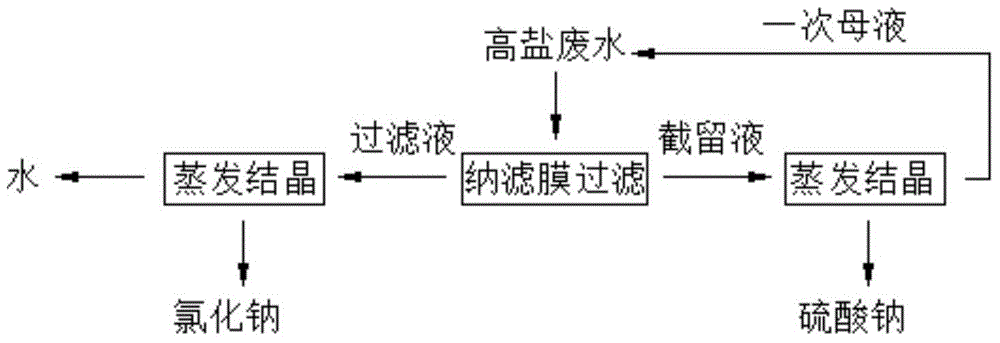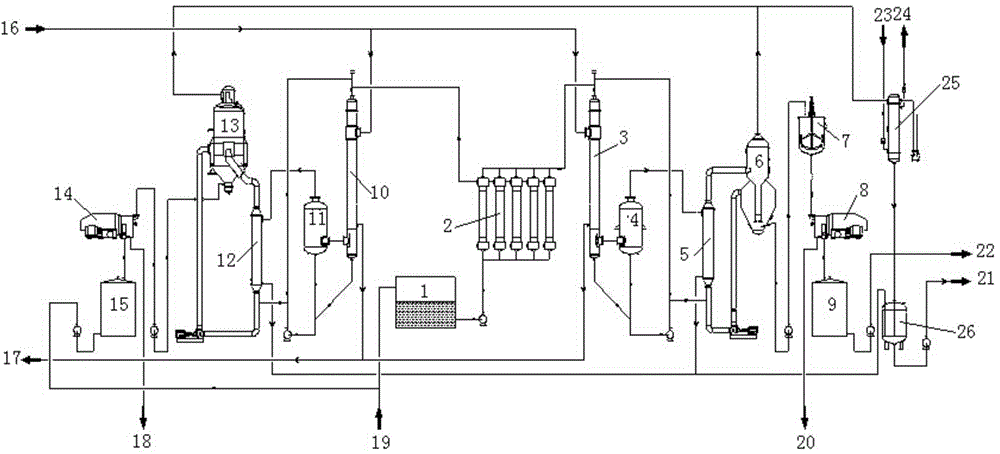Method for recycling high-salt waste water containing sodium chloride and sodium sulfate
A high-salt wastewater, recycling technology, applied in energy wastewater treatment, chemical instruments and methods, alkali metal sulfite/sulfate dehydration, etc., can solve the problems of non-reuse, low purity, and increased wastewater treatment costs, To achieve the effect of reducing the cost of wastewater treatment, the recovery method is simple, and realizing the utilization of resources
- Summary
- Abstract
- Description
- Claims
- Application Information
AI Technical Summary
Problems solved by technology
Method used
Image
Examples
example 1
[0054] The technological process of this embodiment is as figure 2 As shown, the two-effect co-current evaporation process is adopted.
[0055] In this embodiment, the evaporation and crystallization of the retained liquid adopts a double-effect downstream process; the first-effect evaporator adopts a falling-film evaporator, including a first-effect separation chamber B11 and a first-effect heating chamber B10; the second-effect evaporator adopts a forced circulation evaporation crystallizer, Including the second-effect crystallizer B13 and the second-effect heating chamber B12. The filtrate evaporation and crystallization section adopts a double-effect downstream process; the first-effect evaporator adopts a falling film evaporator, including a first-effect separation chamber A4 and a first-effect heating chamber A3; the second-effect evaporator adopts a forced circulation evaporation crystallizer, including a second-effect crystallization Device A6 and two-effect heating ...
PUM
| Property | Measurement | Unit |
|---|---|---|
| pore size | aaaaa | aaaaa |
Abstract
Description
Claims
Application Information
 Login to View More
Login to View More - R&D
- Intellectual Property
- Life Sciences
- Materials
- Tech Scout
- Unparalleled Data Quality
- Higher Quality Content
- 60% Fewer Hallucinations
Browse by: Latest US Patents, China's latest patents, Technical Efficacy Thesaurus, Application Domain, Technology Topic, Popular Technical Reports.
© 2025 PatSnap. All rights reserved.Legal|Privacy policy|Modern Slavery Act Transparency Statement|Sitemap|About US| Contact US: help@patsnap.com


